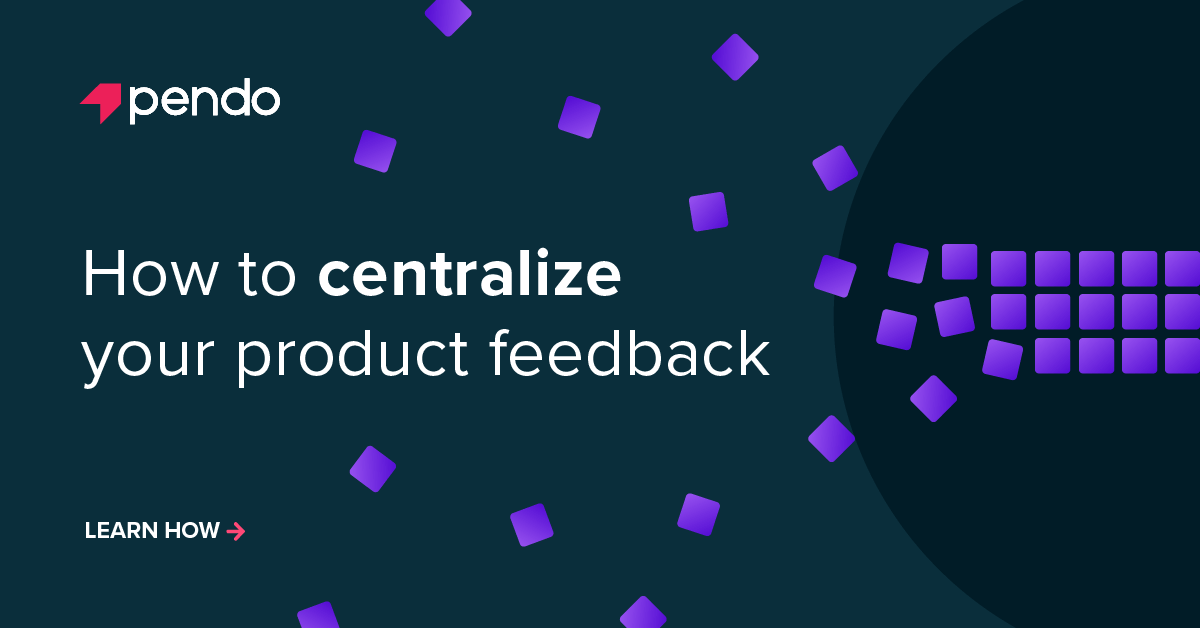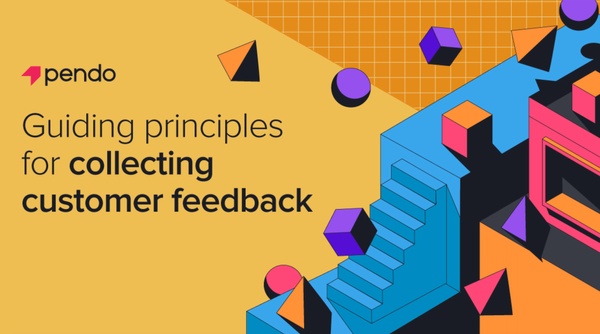This article was originally published on Pendo’s Product Teams Blog.
Collecting customer feedback is one of those things that seems a lot simpler than it actually is. Yes, there are plenty of tools available to help teams collect feedback effectively and efficiently. But feedback shouldn’t be treated as an afterthought or play second fiddle to quantitative data like product analytics. What your customers say about (and want from) your product offers some of the most valuable insight into what you build next, and can help you improve the products and features you already have.
Whether you already have a robust customer feedback program in place or are looking to build one from scratch, there are a few key fundamentals to keep in mind. When in doubt, revert back to these five principles:
1. Feedback is a two-way street

As with any good communication, feedback is a two-way street. Sometimes you’ll directly ask for feedback from your customers (also known as active feedback), and sometimes customers will proactively share their feedback and requests (also known as as passive feedback). As you build out your feedback efforts, remember to utilize both active and passive feedback.
Create multiple ways for customers to easily submit feature requests and one-off feedback when it’s convenient for them (for example, while they’re using your product). Then, supplement this with more structured surveys, polls, and interviews to get answers to specific and timely questions that will help inform your development efforts. In the end, your team will be able to get a more complete picture of the customer experience by combining multiple forms of feedback, rather than relying on one or two tactics alone.
How to Build a Voice of The Customer Program - Download the Ebook 👇

2. Always close the loop

Collecting feedback from your customers is only half of the equation–the other half is communicating back. Even if you don’t have an official voice of the customer program that lays out processes for following up on feedback, it’s still important to make sure the team responsible is closing the loop in some capacity.
For each method of collecting customer feedback, always consider what the follow-up mechanism needs to be. Is one team always responsible for responding to NPS surveys? How will you notify customers that you’re working on a feature they requested? These considerations are just as important as listening to feedback in the first place, and helps build trust by showing customers that their voice has truly been heard.
3. Feedback is everyone’s responsibility

Collecting feedback is not just the job of your support or product team. Everyone at an organization is responsible for customer feedback, and the sooner teams across the company recognize this, the better.
This means making sure everyone understands how feedback impacts their work and, more importantly, how it can help them do their jobs better. Remember: When people feel like something can provide value to their own work, they are much more likely to put in the effort to make it successful.
Decide What to Build Next Using Qualitative Feedback - Download the whitepaper 👇

4. Process makes perfect

Since there are so many moving parts in the feedback life cycle, a little (or a lot) of process can never hurt. Start by determining all of your different sources of customer feedback and identifying a process and/or owner for each. Ask yourself questions like:
- Who will be responsible for responding to Net Promoter Score (NPS) responses?
- Which teams will use customer satisfaction (CSAT) scores?
- How will you route feedback from social media to the appropriate team(s)?
- Who will create and send out user surveys?
- How will you solicit ongoing, in-app feedback?
Relating back to the idea that feedback is everyone’s responsibility, this will help ensure everyone knows exactly which inputs they are responsible for, and what to do if they receive feedback that needs to get routed to the product team.
How to centralize your product feedback - Check out the blog 👇

5. Give product feedback a home

As you think about all of the different places you’ll collect customer feedback, you also need to make sure any product feedback or feature requests coming out of these inputs gets funneled to a central location for the product team. This prevents valuable information from slipping through the cracks, and allows product teams to use feedback data to make better decisions about what to build next.
Start by mapping all of the places you gather (or could gather) feedback from your customer base, then educate teams so they know what to do when they receive a piece of feedback or feature request from a customer (e.g. if it’s included in a survey response or comes up during a one-on-one conversation). It’s also useful to create a Product Feedback Policy to help set expectations with internal teams and customers on how you capture, use, and communicate back about product feedback.



 Follow us on LinkedIn
Follow us on LinkedIn



